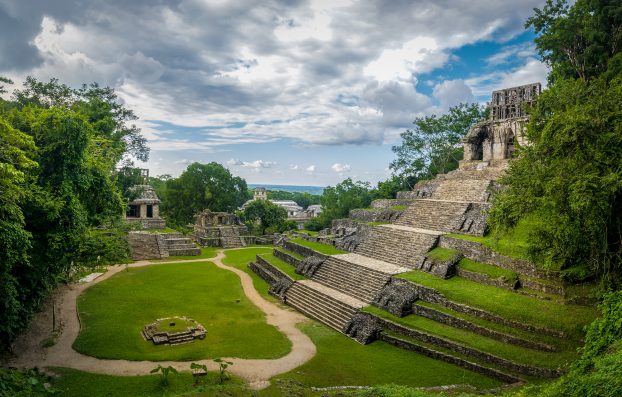Archaeologists Uncovered Rare Ancient Crabs Eaten During A Mayan Ritual Banquet, And The Discovery Helps Reveal More Details About Palace Rituals

More than 1,300 freshwater crab remains that were eaten during an ancient Mayan ritual banquet were uncovered by archaeologists from the National Institute of Anthropology and History in Mexico.
The discovery was made at the Palace of Palenque, an archaeological site in the southern state of Chiapas. It has opened up new interpretations of the role of crabs in cuisine and ceremonial acts.
The palace is the largest, most well-preserved structure within the ruins of the site, and researchers believe that it once served as the center for ceremonial and administrative activities.
Now, it is a historical landmark in Mexico. Its interior consists of a complex maze of rooms, two courts, and a stunning tower with four levels.
Palenque, the ancient Maya city now known as the state of Chiapas, flourished for centuries. It reached its peak between 500 and 700 A.D. when its influence spread to surrounding regions.
For more than 3,000 years, the Maya civilization ruled the areas that are now southeastern Mexico, Guatemala, Belize, western El Salvador, and Honduras. Their reign ended with the era of Spanish colonization.
The ancient Mayan people were notable for creating unique artwork and architecture, an advanced astronomical system, and the most sophisticated and fully developed writing system in pre-Hispanic America.
The elite members of ancient Palenque used to consume endemic freshwater crabs as a delicacy during private ceremonies that were held in honor of special events.
According to archaeologists, the crabs symbolized regeneration and marked certain milestones of construction within the palace.

diegograndi – stock.adobe.com – illustrative purposes only
The crab remains have helped reveal more details about the rituals that occurred in the palace hundreds of years ago.
During the ritual banquets of the ancient Maya, food was shared between the participants and the deities.
A researcher named Carlos Varela Scherrer, who specializes in studying animal remains, stated that some Maya communities in northern Chiapas today prepare large amounts of food right before days of festivities.
Leftover food would be poured into holes in the ground as an offering to the deities they worship, a practice that also took place during pre-Hispanic times.
While conducting excavations in the region, researchers came across two ritual deposits. Alongside the crab remains, they found a stucco head that appeared to represent an ancient ruler of Palenque, a ceramic vessel with an image of a Maya deity, and a pipe shaped like a river prawn.
It was rare for such fragile remains, like crab parts, to be among the finds. Their unique preservation is all thanks to the rituals of the ancient Mayas.
“In general terms, we were able to appreciate that these deposits are the product of events that were characterized by the consumption and burning of food and other objects, which were placed over cavities excavated in the floors and quickly covered again, enabling the exceptional conservation of archaeological material,” said Scherrer.
Sign up for Chip Chick’s newsletter and get stories like this delivered to your inbox.
More About:News





